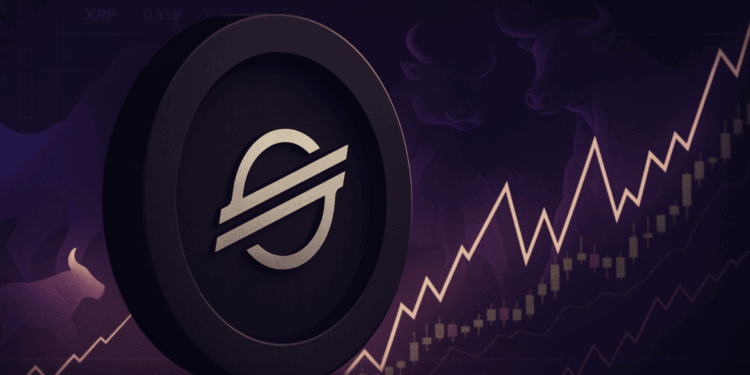- Stellar is a fast, low-cost blockchain designed for payments, tokenization, and financial inclusion, using its native coin XLM.
- Its ecosystem is expanding through partnerships with MoneyGram, Franklin Templeton, and fintechs, bringing real-world adoption.
- With major 2025 upgrades, Stellar could challenge XRP’s dominance in cross-border finance and DeFi integration.
Stellar, launched in 2014, has emerged as one of the most promising blockchain platforms reshaping the global financial landscape. Designed with a clear mission to make money transfers fast, affordable, and accessible to everyone, Stellar has steadily evolved beyond its origins as a simple payment system into a comprehensive decentralized finance (DeFi) powerhouse.
As we move deeper into 2025, Stellar’s network boasts lightning-fast transactions, ultra-low fees, robust developer tools, and an ever-expanding ecosystem that rivals traditional finance and many of its crypto competitors. So, let us take a closer look at how Stellar operates, the problems it tackles, its unique utility, and what the future holds for this transformative blockchain.
What is Stellar?
Stellar is a public, open-source blockchain platform designed to facilitate cross-border payments and decentralized financial applications. Unlike many blockchains that focus solely on cryptocurrencies, Stellar aims to bridge traditional finance and digital assets, making it possible to transfer any type of value—fiat currency, cryptocurrencies, commodities, or tokenized assets—across borders instantly and with minimal cost.
At its core, Stellar’s vision is financial inclusion: enabling billions of people worldwide to participate in the global economy through simple, transparent, and affordable transactions. This mission is spearheaded by the Stellar Development Foundation (SDF), which continuously drives innovation and partnerships that extend Stellar’s real-world utility.
How Does it Work?
The magic behind Stellar lies in its innovative consensus mechanism called the Stellar Consensus Protocol (SCP), which is a variation of the Federated Byzantine Agreement (FBA). This protocol allows nodes on the network to reach agreement on transaction validity quickly and efficiently, without the energy-intensive computations typical of proof-of-work blockchains.
Essentially, in Stellar’s network, each node selects trusted peers forming overlapping groups known as quorum slices. When enough nodes within these quorum slices agree on a transaction, it is validated and recorded on the ledger. This decentralized yet highly efficient approach enables Stellar to confirm transactions in just 3 to 5 seconds and process up to 1000 transactions per second, with planned upgrades pushing throughput even higher.
Stellar also boasts a built-in decentralized exchange (DEX), allowing users to trade tokens seamlessly without centralized intermediaries. This feature supports Stellar’s vision of tokenizing real-world assets, meaning that anything of value—from fiat money to property deeds—can be digitized and exchanged effortlessly.
What Problems Does It Solve?
Stellar exists because the traditional financial system is bloated, expensive, and slow. To address these issues, Stellar offers:
Costly Cross-Border Payments
Traditional international transfers come with steep fees and hidden charges, often reaching double digits. Stellar slashes these costs dramatically, making global payments affordable for individuals and businesses alike.
Slow Transaction Speeds
Conventional banking systems can take days to settle cross-border payments. Stellar completes transactions in just a few seconds, enabling real-time global transfers without waiting periods or clearing delays.
Financial Exclusion
Billions remain unbanked due to lack of infrastructure and high entry barriers. Stellar’s accessible blockchain platform opens the door to financial services for anyone with internet access, promoting true economic inclusion.
Fragmented Payment Networks
Cross-border payments typically require multiple intermediaries, increasing complexity and risk. Stellar’s decentralized protocol removes middlemen, streamlining the entire process into one efficient, transparent network.
Limited Access to Asset Trading
Traditional asset markets are often centralized, slow, and expensive. Stellar’s tokenization capabilities democratize access to a wide variety of assets, enabling fractional ownership and instant trading on its built-in decentralized exchange.
Micropayment Impracticality
Small-value transactions are impractical with traditional payment methods due to high fees. Stellar’s near-zero fees enable micropayments, unlocking new business models in digital content, IoT, and emerging economies.
Utility and Offerings
Stellar’s expanding suite of utilities positions it as a multi-dimensional financial platform. This includes:
Lumens (XLM)
Lumens (XLM) serve as the lifeblood of the Stellar network. XLM is used to facilitate transactions, pay network fees, and prevent spam by requiring a minimal balance to maintain accounts. Beyond its technical role, Lumens act as a bridge currency that helps convert one asset to another within the network instantly, enabling smooth cross-border exchanges. Its low-cost and high-speed features make it essential for Stellar’s vision of efficient global payments.
Tokenization of Assets
Stellar’s ability to create digital tokens representing any asset is a game-changer. From fiat currencies to commodities, bonds, or even carbon credits, tokenization unlocks liquidity and accessibility. This transforms traditionally illiquid or inaccessible assets into instantly tradable digital forms, broadening market participation and reducing friction.
Micropayments and Streaming Payments
With fees as low as 0.00001 XLM, Stellar enables practical micropayments—transactions so small they were previously impossible to handle cost-effectively. This paves the way for innovative business models such as pay-per-use digital content, IoT device payments, and subscription services with continuous streaming payment models.
Developer Tools and Smart Contracts
Recent upgrades have introduced smart contract capabilities, expanding Stellar’s programmable finance potential. Developers can now build complex dApps that leverage verified contract storage and advanced trading features. These tools make Stellar attractive for startups and enterprises looking to innovate in finance.
Cross-Border Payment Solutions
At its heart, Stellar remains focused on improving global payments. By connecting financial institutions, payment processors, and remittance services, it creates a unified network that drastically cuts costs and transaction times. Notably, its partnerships with companies like MoneyGram demonstrate real-world adoption of this vision.
Ecosystem and Adoption
Stellar’s ecosystem is expanding rapidly, with over 5 million accounts and more than 1.5 billion operations processed. This growth is driven by strategic partnerships, active developers, and rising institutional interest. Key highlights include:
- MoneyGram Partnership – Uses Stellar and USDC for fast, low-cost multi-currency settlements, significantly reducing cross-border payment friction and costs.
- Developer Engagement – Continuous upgrades and open-source tools empower a vibrant developer community building diverse DeFi and payment solutions.
- Franklin Templeton Tokenization – The asset management giant launched tokenized money market funds on Stellar, showcasing its ability to bridge traditional finance and digital assets.
- Institutional Interest – Deloitte, American Express, and Stripe have explored Stellar’s capabilities for financial services, lending serious credibility to the network.
- Emerging Market Adoption – Stellar’s affordability and speed help bring financial services to underbanked regions, promoting global inclusion.
Roadmap and Plans Ahead
2025 is a pivotal year for Stellar, with a roadmap designed to scale the network, attract institutional capital, and elevate the developer experience to rival top-tier platforms. This includes:
Performance Upgrades
Stellar is targeting a leap to 5,000 transactions per second by introducing concurrency, aggressive caching, and ahead-of-time smart contract compilation. These enhancements are paired with a reduction in ledger close times from 5 to 2.5 seconds, delivering faster transaction finality without compromising security.
Developer Stack Evolution
Lab 3.0 has arrived, offering verified smart contract storage, better tooling, and seamless deployment options. The CLI now supports advanced trading and contract management, while the Freighter App Browser introduces a clean interface for discovering and using Stellar-based dApps.
Developer Adoption
With AI tools like Stella and integrations with platforms like OpenZeppelin, Stellar is crafting a developer experience that rivals—and arguably exceeds—what’s available on Ethereum and Solana.
DeFi Expansion
With a bold target of $1.5 billion in total value locked, Stellar is doubling down on lending, deposits, and tokenized assets. Its native DEX, low fees, and stablecoin integrations position it as a serious contender in the DeFi space.
Institutional and Web3 Strategy
Improved DEX infrastructure, real-world asset tokenization, and stablecoin integrations (USDC, EURC) are front and center—positioning Stellar as a key player in the evolution of global finance and Web3 adoption.
Final Thoughts
In conclusion, Stellar has evolved into a high-performance blockchain platform driving real change in global finance. With fast transactions, low fees, and strong institutional support, it offers practical solutions for payments, DeFi, and asset tokenization. All in all, as it pushes into 2025 with major upgrades and adoption milestones, Stellar is positioning itself as a serious backbone for the future of finance.














